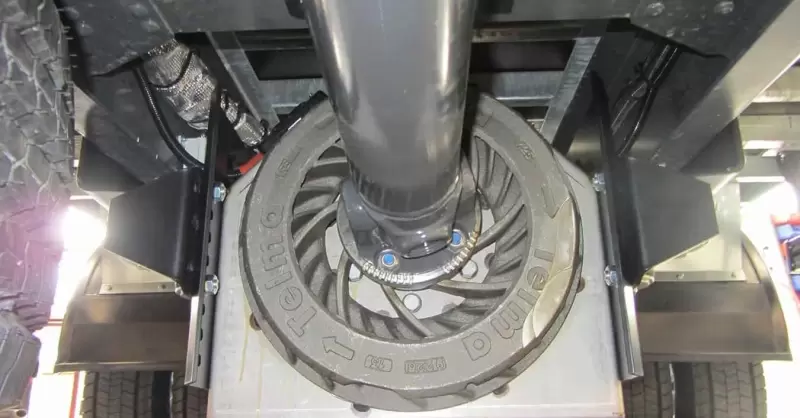Are you eager to know what is a retarder CDL? For individuals pursuing a Commercial Driver’s License (CDL), mastering the various components of vehicle operation is crucial. One such element is the retarder, a feature designed to enhance braking efficiency. In this comprehensive guide, we will explore the intricacies of retarders, their types, usage, and their significance in the context of CDL testing.
What Is A Retarder CDL?
Navigating Brake Technology:
Understanding the term “retarder” in the context of a Commercial Driver’s License (CDL) involves exploring a braking technology that complements traditional braking systems. A retarder provides an additional method for managing vehicle speed and enhancing overall braking performance.
Also Read : What Is A Flake Of Hay?
CDL What Is A Retarder: Unveiling Braking Mechanisms:
When individuals encounter the term “CDL what is a retarder,” it signifies a need to comprehend the specific braking mechanism integrated into commercial vehicles. This knowledge is crucial for CDL holders to operate their vehicles safely and efficiently.
Also Read : What Is A Supercrew Cab?
What Is A Retarder CDL Used For? Enhancing Braking Efficiency:
A retarder in the context of a CDL is used to enhance braking efficiency, especially when managing the speed of large commercial vehicles. This technology provides an additional layer of control, contributing to safer and more controlled braking.
What Is A Retarder CDL Test? Assessing Braking Proficiency:
For individuals pursuing a CDL, a specific test may assess their understanding and proficiency in utilizing retarders. This examination evaluates the driver’s ability to effectively integrate retarders into their braking strategy, emphasizing safety and control.
Retarders CDL Answers: Mastering Exam Preparedness:
As part of CDL training, individuals may seek answers related to retarders, aiming to master the information required for exams. Understanding the types, purposes, and limitations of retarders is essential for providing accurate responses during CDL examinations.
Types of Retarders CDL: Exploring Technological Diversity:
Retarders in the realm of CDLs come in various types, each employing distinct technologies. Exploring these types, such as exhaust brake retarders, hydraulic retarders, or electromagnetic retarders, provides drivers with a comprehensive understanding of available options.
Retarders Can Be Used When: Adhering to Operational Guidelines:
Knowing when retarders can be used is essential for CDL holders. While they are valuable tools for controlling speed on downhill slopes, it’s crucial to adhere to operational guidelines and be aware of any restrictions on retarder use in certain areas.
The Purpose of Retarders is to CDL: Meeting Safety Standards:
The primary purpose of retarders in the context of a CDL is to enhance safety standards during braking maneuvers. By providing additional control over vehicle speed, retarders contribute to preventing overheating of traditional braking systems and promoting overall safety.
Retarders Can Be Used Only: Understanding Limitations:
While retarders are beneficial, drivers must be aware of limitations. Understanding that retarders can be used only in specific situations ensures adherence to operational guidelines and helps prevent unnecessary wear or strain on the vehicle.
Controlled Braking CDL: Integrating Retarders for Precision:
Controlled braking in the realm of a CDL involves the strategic integration of retarders to achieve precise speed management. Drivers learn to master controlled braking techniques, leveraging retarders for enhanced control and safety.
To read about more informational things you have to visit ranyy.com
FAQ
How Does A Retarder Work On A Truck?
When retardation is required, fluid (oil or water) is pumped into the chamber, and the viscous drag induced will slow the vehicle. The working fluid will heat, and is usually circulated through a cooling system. The degree of retardation can be varied by adjusting the fill level of the chamber.
What Is The Principle Of Retarder?
The retarder works by absorbing energy during the compression stroke, and throwing away this energy through the exhaust valves as the piston completes its compression stroke. The most popular engine compression retarder is the Jake Brake.
What Are The Two Types Of Retarders?
Exhaust braking systems are the most widely used form of engine braking systems. The current state-of-the-art in retarders is represented by two basic concepts, the electrodynamic retarder and the hydrodynamic retarder.
What Is The Difference Between A Brake And A Retarder?
Retarders are designed to provide auxiliary slowing of the vehicle, such as for controlling the speed on long downgrades without the use of the main braking system. Engine retarders (also known as engine brakes) help to save the main braking system for emergency stopping.
Conclusion: Empowering CDL Holders with Braking Mastery:
In conclusion, a thorough understanding of retarders is paramount for individuals holding a Commercial Driver’s License (CDL). Whether navigating CDL exams, exploring types of retarders, or comprehending their purpose, this knowledge empowers drivers to operate their vehicles with enhanced safety and efficiency. By mastering the intricacies of retarder technology, CDL holders contribute to safer roads and elevate the standards of professional driving.
I have addressed all the queries and topics mentioned below mentioned in this article
cdl “what is a retarder”
cdl what is a retarder
What is a retarder cdl used for
What is a retarder cdl test
retarders cdl answers
types of retarders cdl
retarders can be used when
the purpose of retarders is to cdl
retarders can be used only
controlled braking cdl
